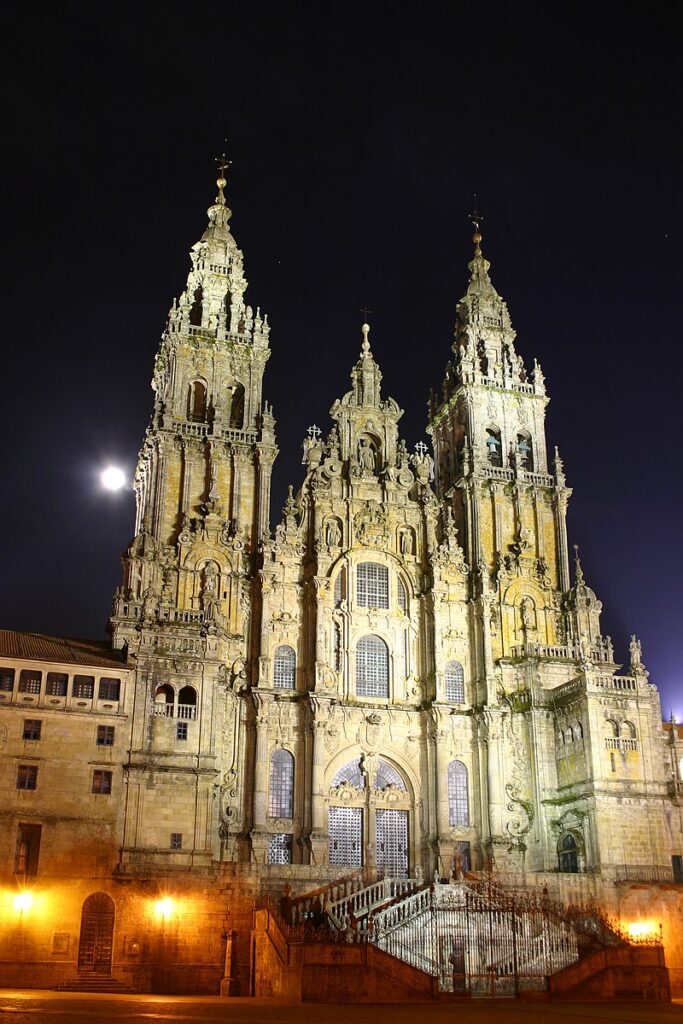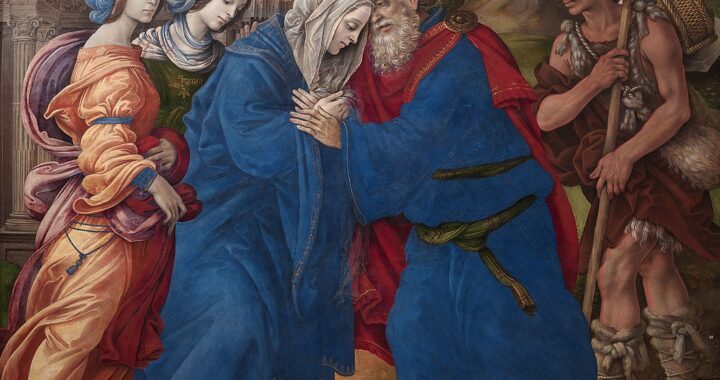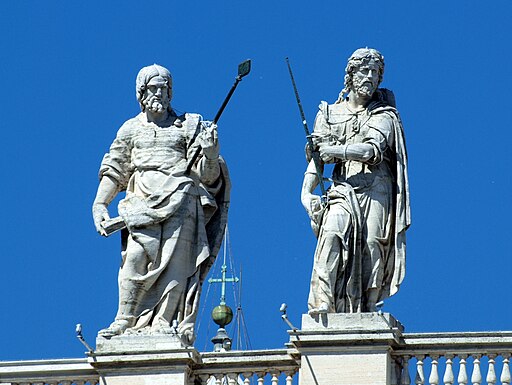
Alf van Beem, Wikimedia Commons
Before Jesus Christ ascended into Heaven, He gave His apostles their marching orders. He explicitly told them: “Go into all the world and preach the gospel to the whole creation (Mark 16:15)”. And so they did.
The Twelve obediently began preaching and traveling all over the known world, bringing the Good News of Jesus Christ to as many people as possible. But two of those apostles—Saints Thomas and James the Greater—are particularly known for their missionary journeys, and both are celebrated in the Church’s calendar in the month of July.
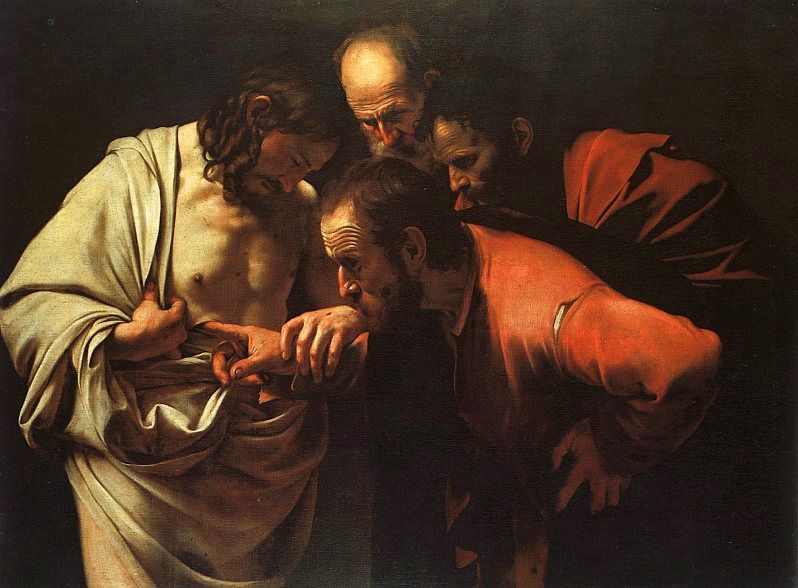
Saint Thomas is best known for his bold reactions to difficult situations. When Jesus asked His disciples to follow Him back to Jerusalem—where people had only recently wanted to kill Him—Thomas was ready to die too (John 11:16). When the other apostles tried to convince Thomas that Jesus had risen from the dead, Thomas responded with the first century equivalent of “Yeah, right.” (See John 20:24-25.) But as many Christians have subsequently pointed out, it was Thomas’ skepticism that provides us with proof that the risen Christ was bodily present to them, wounds and all, not merely a ghost or an hallucination.
That’s why it’s not hard to believe that Thomas was the member of the Twelve Apostles who managed to travel the greatest distance from Jerusalem. According to tradition, Thomas reached India, where he converted many people to the faith, built churches, and died a martyr. Some say his relics were brought back to Edessa (modern Turkey).
Other scholars scoff at this tradition, asking how Thomas could have crossed the Himalaya mountains. The answer is that he didn’t need to; the Romans had already established trade routes with India across the Indian Ocean. What about the “Gospel of Thomas”, an ancient document that purports to describe Thomas’ life? Although the Church dismissed this work as a gnostic writing more than fifteen hundred years ago, some of the details included in this work corroborate remarkably well with first century Indian history. While no one argues that violent repression of Christianity has decimated the Church in India more than once over the centuries, it’s not unreasonable to believe, as Indian Christians fervently do, that the tomb of the apostle Thomas has been in India since his death in the first century. Thomas’ feast day is July 3.
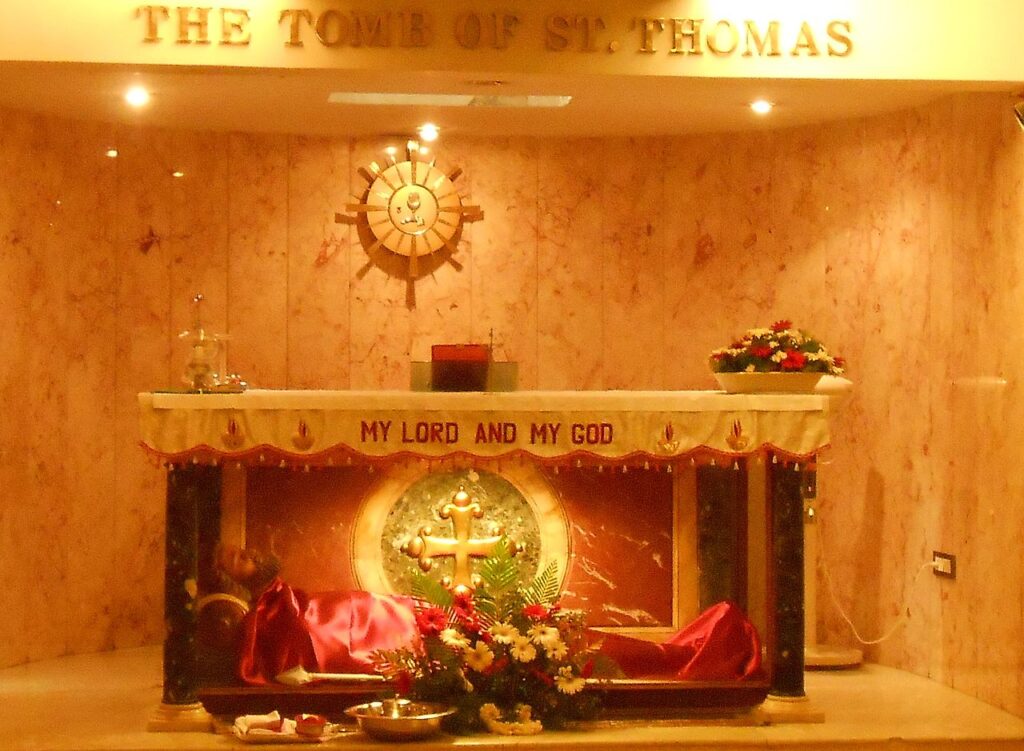
Two of the Twelve Apostles were named James, which probably caused as much confusion to them as it does to us today. However, it is certain that the man whom we call Saint James the Greater was: 1) Saint John’s (probably older) brother, 2) the son of Zebedee, and 3) a fisherman. We are also certain that James the Greater was one of those three men whom Jesus decided to take with Him for key events—the raising of Jairus’ daughter, the Transfiguration, His last moments of prayer in the Garden of Gethsemane—along with Saints Peter and John.
On one occasion, Jesus called James and John “sons of thunder (Mark 3:17)”. Was that because James and John were such hotheads, or was it because their father, Zebedee, was none too pleased when his two sons walked away from the family business? We will never know.
This Saint James has long been called “the Greater”. That is not because we know that he was taller or older than the other James, but because he appears so much more often in the Gospels than the disciple known as James, the son of Alphaeus.
According to Acts 12:2, James the Greater was the first apostle to die. He was martyred by King Herod Agrippa I, simply because Herod wanted to placate the Jewish leaders who had become increasingly hostile to the early Church. Tradition says that his death occurred in the year 44 AD, only about a decade after the death of his Master.
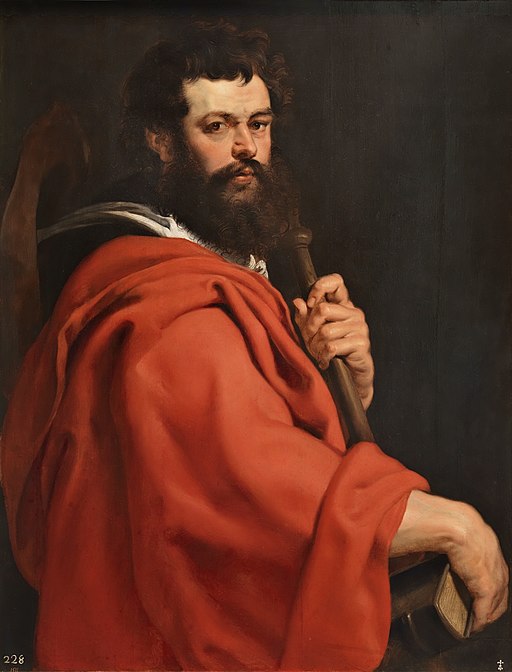
The famous painting of Saint James above identifies him as a martyr through the bright red cloak he is wearing. But other details in the painting point to another longstanding tradition associated with James the Greater.
From at least the time of the Middle Ages, Spanish Christians have held that Saint James the Greater traveled to Spain, spread the Gospel there, and then returned to Jerusalem, where he died. Although there are significant arguments against this tradition, it would not have been impossible for James to travel to Spain, which was part of the Roman empire at the time, and back. Spanish Catholics have also believed for many centuries that Saint James’ relics were brought back to Spain after his death and are now located in the cathedral built in his honor, Santiago de Compostela.
Pilgrimages are an ancient Christian tradition. In the thoroughly Christian culture of medieval Christendom, it was not uncommon for Catholics to undertake journeys to holy sites to thank God for favors granted, to request physical healings or spiritual blessings, to grow in their faith, and for many other reasons, pious or otherwise. In Spain, the tradition arose of making a pilgrimage to Santiago de Compostela. The traditional pilgrimage route, currently called the Camino de Santiago, is 500 miles long and typically takes thirty days to hike on foot. To hike such a distance, one would be advised to bring a hat and carry a staff, as Saint James does in Rubens’ painting above. Saint James’ feast day is July 25.
As followers of Jesus Christ, we can be thankful that His apostles obeyed His command and traveled as far as they could to bring the Good News to people who had never heard it before. As we travel this summer—on pilgrimages or vacations or simple day trips—we can ask Saints Thomas and James to intercede for us, protect us on our journeys, and maybe even inspire us with some of their boldness in living and proclaiming our faith.
